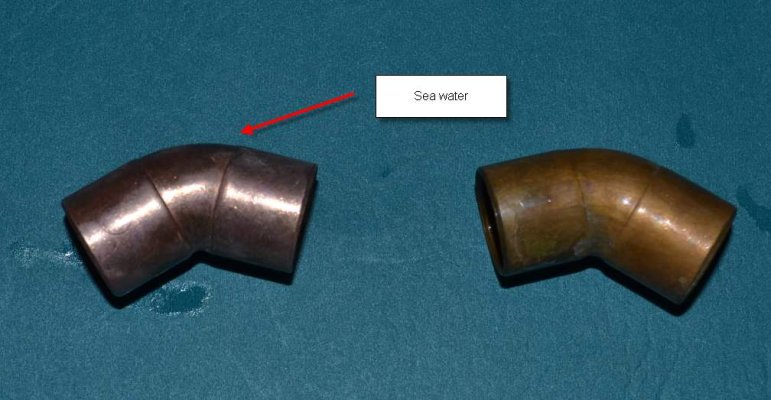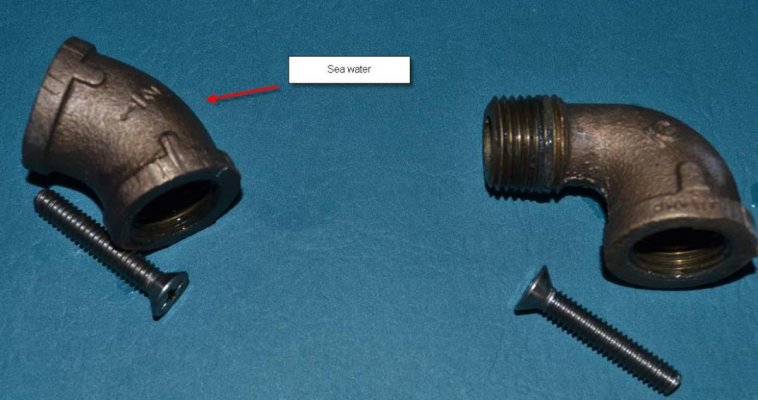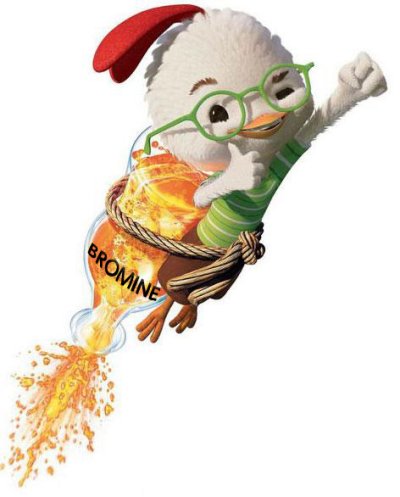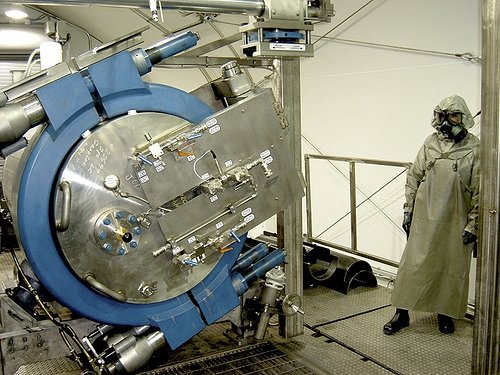Delfin
Grand Vizier
- Joined
- Jan 20, 2010
- Messages
- 3,821
Given that the practice of using spa and pool bromine/chlorine tablets placed in the raw water strainer as a means of cleaning an a/c unit is considered safe by some and it seems to be a common practice, even if one that doesn’t appear to be recommended by manufacturers, I thought I’d do a chemistry experiment to get a little real world data.
There are some interesting youtube videos on the fun you can have with bromine and chlorine, like making bombs when mixing bromine with rubbing alcohol….. bromine bomb - YouTube , creating lightning in a test tube when mixing bromine with aluminum…. BROMINE and ALUMINUM reaction - YouTube , or making a firebomb when chlorine is mixed with brake fluid… Chlorine & Brake Fluid - YouTube .
However, these clearly are extreme compared to the practice described – dropping a couple of pool tabs into the raw water strainer – or asked about by some – metering bromine through the system on a continuous basis. To try to replicate the practice recommended as safe I placed samples of 4 non-ferrous metals with one bromine tab in a pint jar of sea water and a pint jar of fresh water (picture 1).
As expected, the tab in sea water began to produce quite a lot more elemental chlorine gas than fresh water (picture 2, although pretty hard to see in the photo.) I left the metals in the solution for 8 hours, to try to simulate multiple exposures of the metals over time if this practice was adopted as some have advised.
I probably should have sealed the jars to more closely simulate dropping bromine into your raw water strainer but I was concerned the jars might explode from the amount of chlorine gas produced. Probably not likely, but I didn’t want to find out.
The results after 8 hours exposure are shown in the remaining pictures. The results were not as dramatic as I thought but still pretty noticeable. The copper in the sea water got bright within a couple of hours as the patina of oxidation was eaten away, then started to show burning as the bromine continued to work on it. The copper in the fresh water showed some discoloration, but not much (picture 3). The stainless and bronze seems unaffected in both samples (pictures 4.) The aluminum exposed to bromine in sea water reacted much more vigorously than that in fresh water, with more of it eaten away in the salt water (picture 5).
I have no idea how long it would take to cause damage to one’s system by this practice, and that might be a function of how much aluminum or copper is present, but compared to using dilute acid to accomplish the same purpose without the added effect of dissolving copper and aluminum in one's system this “recommendation” doesn’t seem to have much to recommend it after all.
There are some interesting youtube videos on the fun you can have with bromine and chlorine, like making bombs when mixing bromine with rubbing alcohol….. bromine bomb - YouTube , creating lightning in a test tube when mixing bromine with aluminum…. BROMINE and ALUMINUM reaction - YouTube , or making a firebomb when chlorine is mixed with brake fluid… Chlorine & Brake Fluid - YouTube .
However, these clearly are extreme compared to the practice described – dropping a couple of pool tabs into the raw water strainer – or asked about by some – metering bromine through the system on a continuous basis. To try to replicate the practice recommended as safe I placed samples of 4 non-ferrous metals with one bromine tab in a pint jar of sea water and a pint jar of fresh water (picture 1).
As expected, the tab in sea water began to produce quite a lot more elemental chlorine gas than fresh water (picture 2, although pretty hard to see in the photo.) I left the metals in the solution for 8 hours, to try to simulate multiple exposures of the metals over time if this practice was adopted as some have advised.
I probably should have sealed the jars to more closely simulate dropping bromine into your raw water strainer but I was concerned the jars might explode from the amount of chlorine gas produced. Probably not likely, but I didn’t want to find out.
The results after 8 hours exposure are shown in the remaining pictures. The results were not as dramatic as I thought but still pretty noticeable. The copper in the sea water got bright within a couple of hours as the patina of oxidation was eaten away, then started to show burning as the bromine continued to work on it. The copper in the fresh water showed some discoloration, but not much (picture 3). The stainless and bronze seems unaffected in both samples (pictures 4.) The aluminum exposed to bromine in sea water reacted much more vigorously than that in fresh water, with more of it eaten away in the salt water (picture 5).
I have no idea how long it would take to cause damage to one’s system by this practice, and that might be a function of how much aluminum or copper is present, but compared to using dilute acid to accomplish the same purpose without the added effect of dissolving copper and aluminum in one's system this “recommendation” doesn’t seem to have much to recommend it after all.











